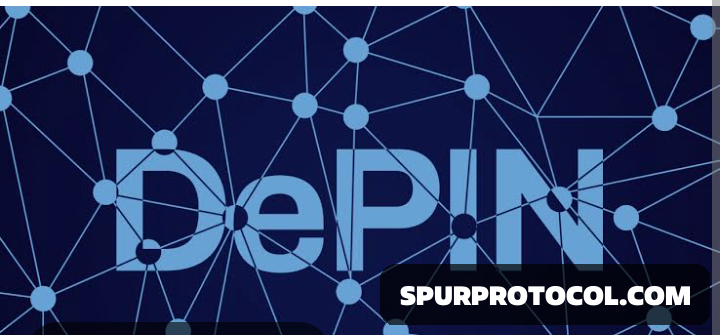DePIN covers various domains such as wireless networks, cloud computing, sensor networks, energy grids, and mobility services, fostering a model where individuals and communities contribute to infrastructure development and are rewarded fairly for their participation.
Key Characteristics of DePIN
1. Decentralization & Ownership
Unlike traditional infrastructure models dominated by centralized corporations, DePIN enables community ownership of physical infrastructure.
Contributors—individuals or small businesses—can deploy, maintain, and operate hardware nodes while being incentivized through crypto-based rewards.
2. Tokenized Incentives & Cryptoeconomics
DePIN networks rely on cryptographic tokens to incentivize participation.
These tokens can be used for:
Paying for network services
Rewarding infrastructure providers
Participating in governance decisions
3. Trustless Coordination & Smart Contracts
Smart contracts facilitate transparent and automated operations without the need for intermediaries.
This ensures fair distribution of incentives and trustless service agreements between participants.
4. Efficient & Scalable Deployment
Traditional infrastructure expansion requires massive capital investment and bureaucratic approvals.
DePIN allows anyone to contribute, reducing deployment costs and accelerating global adoption.
Key Sectors and Use Cases of DePIN
1. Wireless Networks (Decentralized Telecom & IoT)
Example: Helium Network – A decentralized wireless network powered by community-operated hotspots providing IoT and 5G coverage.
Benefits: Affordable internet access, reduced reliance on centralized ISPs, and rewards for node operators.
2. Computing & Cloud Storage
Example: Akash Network, Filecoin, Arweave
DePIN offers decentralized cloud computing and storage solutions, replacing traditional centralized services like AWS or Google Cloud.
Benefits: Lower costs, censorship resistance, and increased data privacy.
3. Decentralized Mobility & Transportation
Example: Hivemapper – A decentralized map-building network where drivers contribute real-world data and get rewarded.
Potential Use Cases: Decentralized ride-sharing, logistics optimization, and autonomous vehicle coordination.
4. Renewable Energy Grids
Example: SunContract, PowerLedger
Community-driven solar power grids where individuals can generate, store, and sell renewable energy without intermediaries.
Benefits: Increased energy accessibility, cost savings, and sustainability.
5. Sensor Networks & Smart Cities
Example: WeatherXM, DIMO – Networks where individuals contribute environmental and traffic data for better decision-making.
Benefits: Accurate real-time data, improved urban planning, and enhanced disaster response.
Advantages of DePIN Over Traditional Models
Challenges & Considerations
1. Regulatory & Legal Uncertainty
Many governments have yet to define clear regulations for decentralized infrastructure.
Some DePIN projects may face legal hurdles similar to those encountered by decentralized finance (DeFi).
2. Sustainability of Token Incentives
The success of a DePIN project depends on long-term tokenomics and real-world demand for services.
Projects need to balance incentives for contributors with sustainable economics.
3. Network Reliability & Performance
DePIN relies on distributed infrastructure, which may have variability in service quality compared to centralized providers.
Solutions: Incentivizing high-quality contributors and implementing slashing mechanisms for underperformance.
4. Security Risks
Potential vulnerabilities in smart contracts, node tampering, and data integrity issues must be addressed.
Use of auditable smart contracts and cryptographic proofs is essential.
Future Outlook of DePIN
Growing Adoption: With increasing demand for decentralized solutions, DePIN projects are gaining traction in telecom, computing, and energy sectors.
Institutional Interest: Traditional infrastructure providers are beginning to explore hybrid models, integrating blockchain-based incentives.
Technological Advancements: Innovations in IoT, AI, and blockchain scalability will enhance the efficiency and capabilities of DePIN networks.
DePIN is at the forefront of a new economic and technological revolution, reshaping how physical infrastructure is deployed, owned, and utilized globally. It offers a more inclusive, cost-effective, and resilient model for building the backbone of tomorrow’s digital and physical world.
